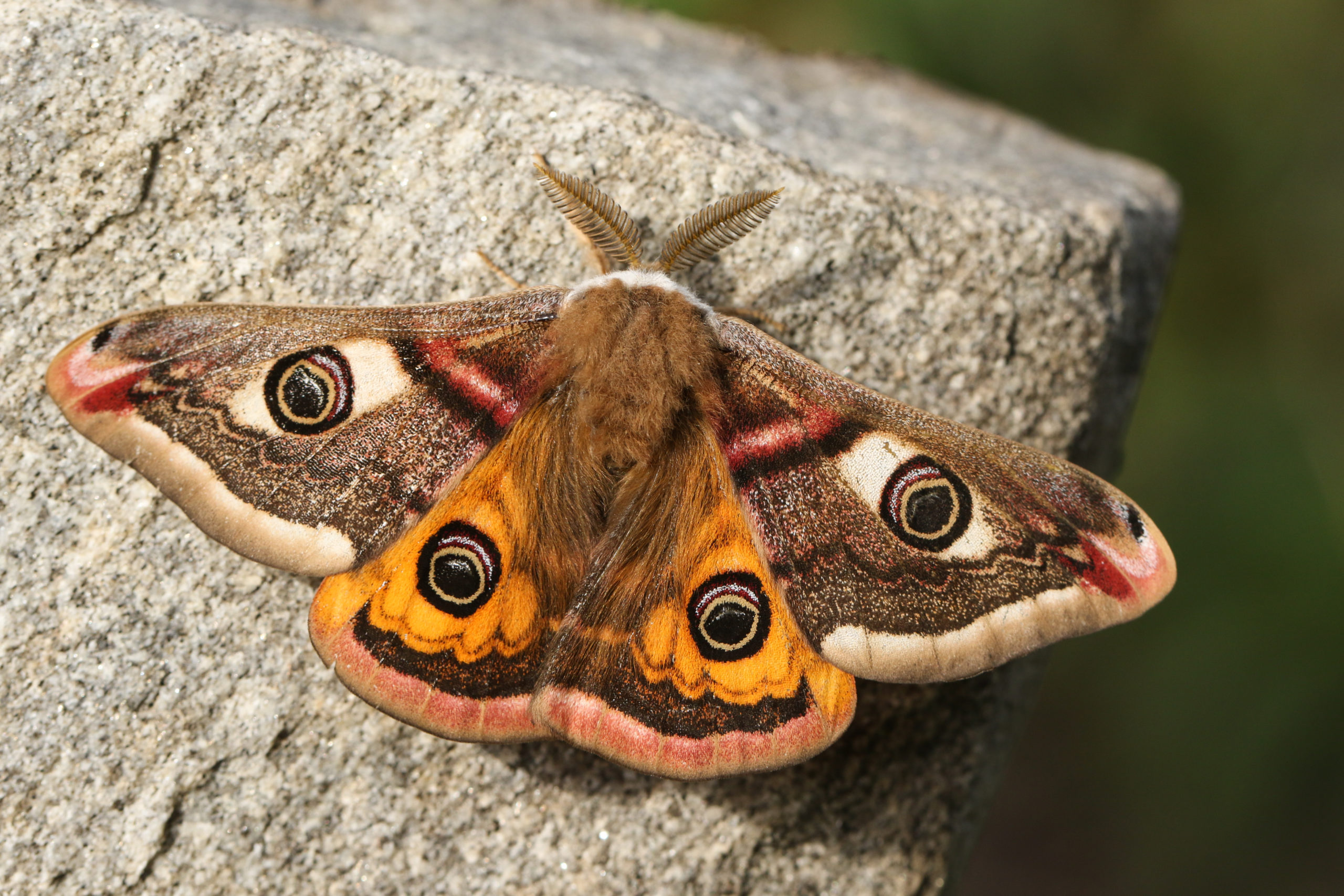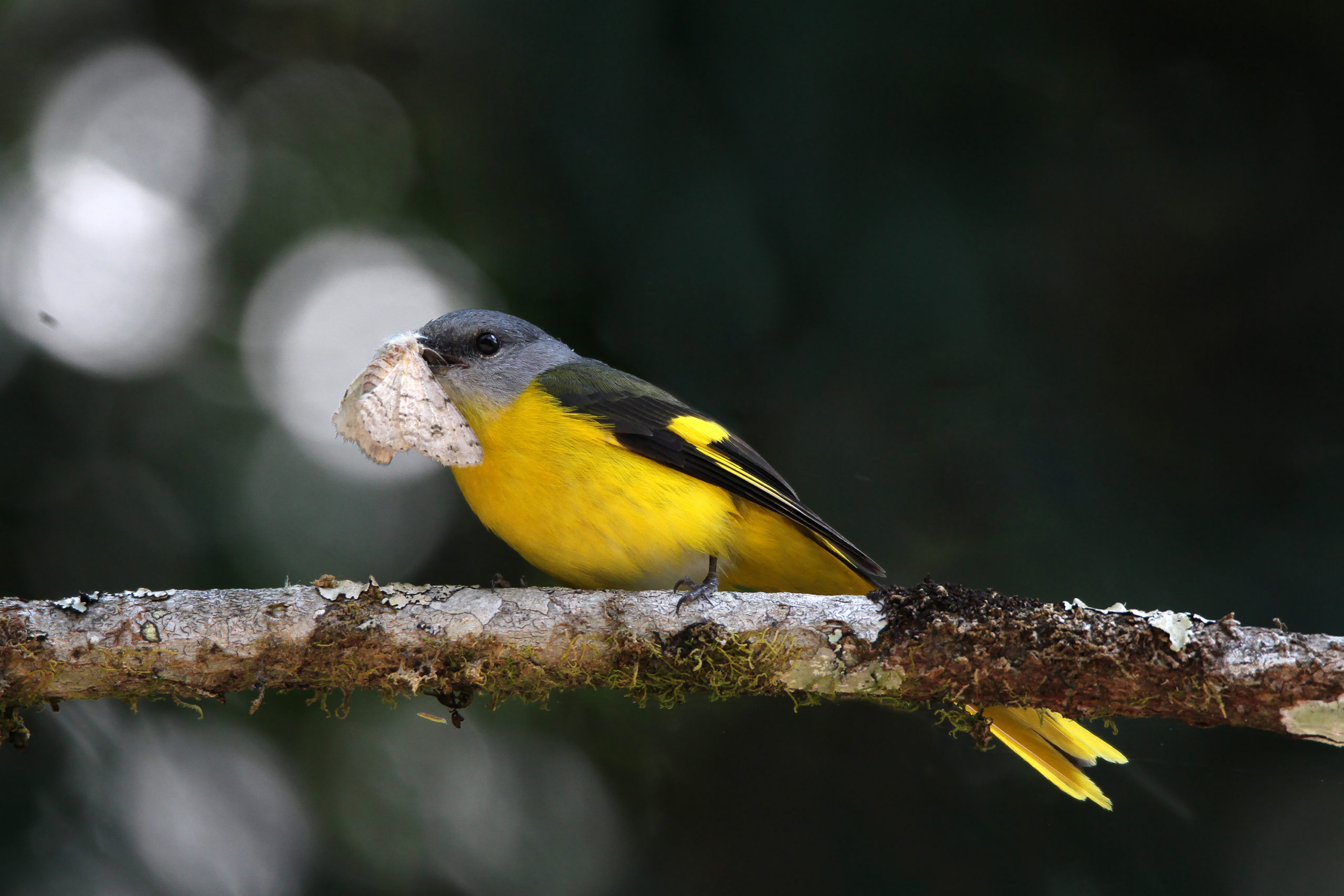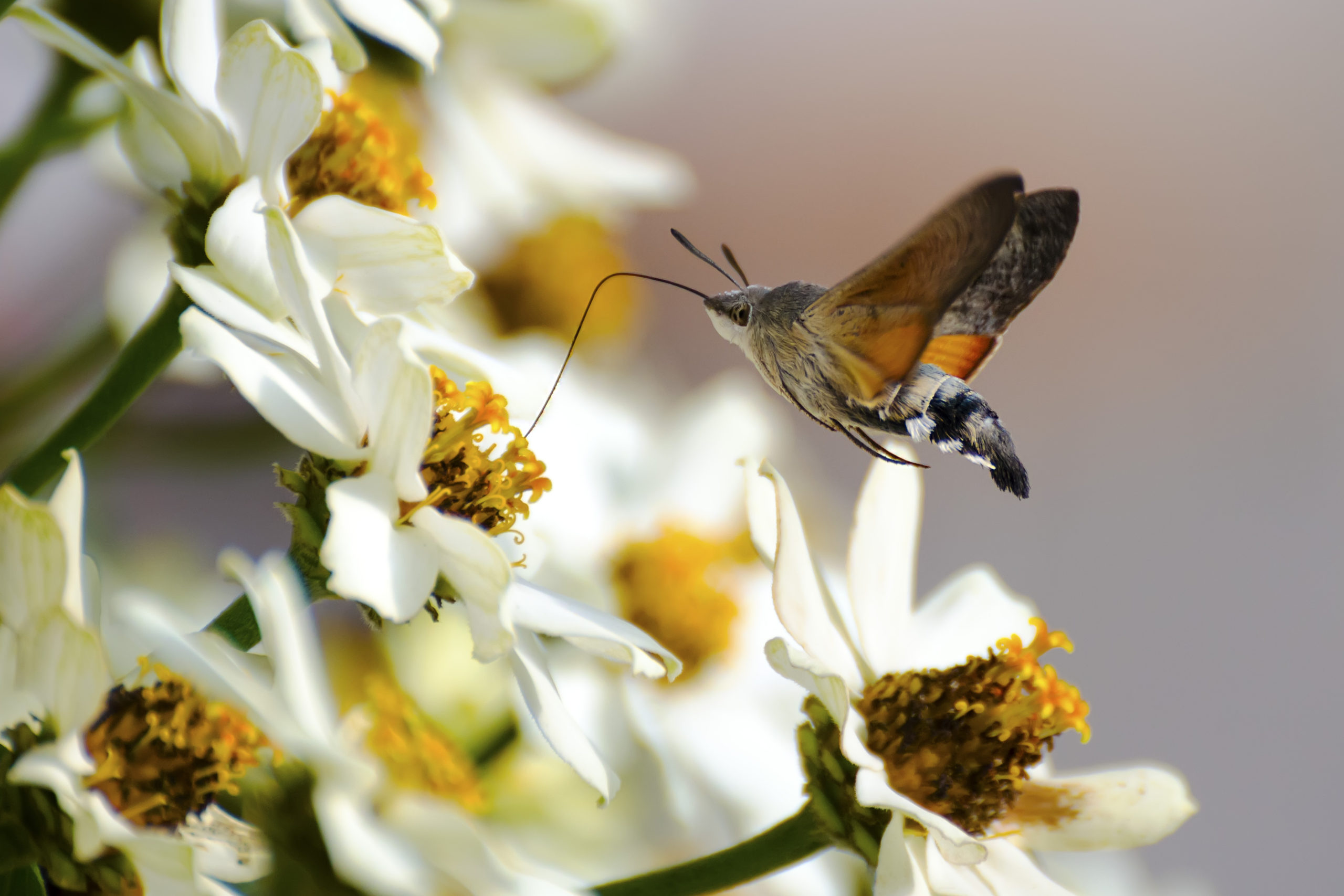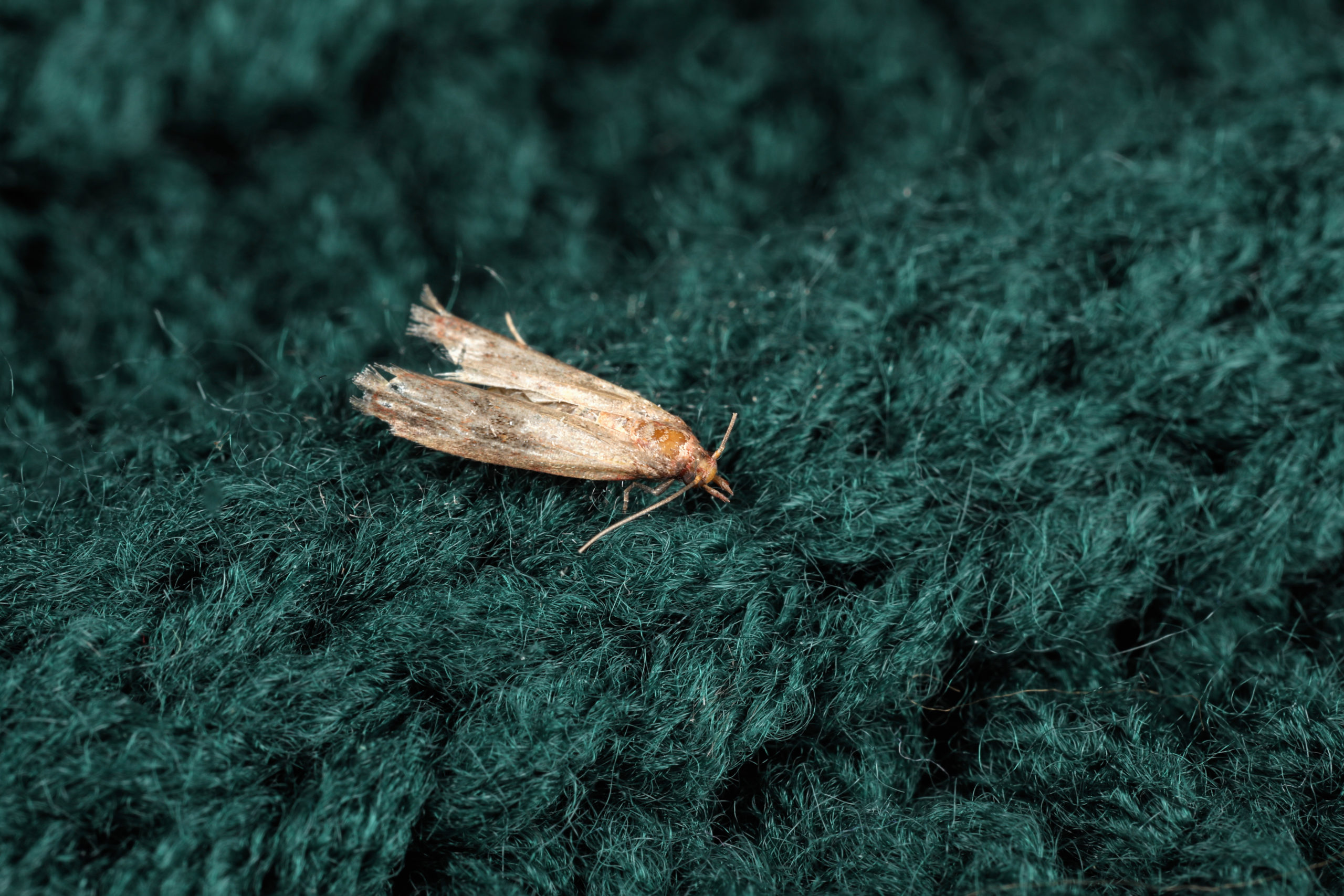The Myriad Modes of Moths
The Myriad Modes of Moths
Moths are a frequent visitor of basically any light that glows in the summer nights, but they can actually cause more damage than we think. They can chew right through many types of fabrics, leaving us with holes in our clothes and furniture. But since many of us don’t know the basics of how a moth spends its days, it’s fun to take a closer look at these fuzzy insects that like to make a guest appearance when the sun goes down.
A Moth’s Life

There are a surprising number of moth species in the U.S. alone: over 11,000! They are in the same Order as butterflies (Lepidoptera), which is why moths are commonly referred to as the “ugly cousins” of beautiful butterflies. Moths are distinguishable by their feathery thin antennae that rival the wiry straight antennae of butterflies. Moths also have two pairs of scaly wings, and the day-flying varieties are typically brighter in color than the popular nocturnal ones. The caterpillar stage eats a lot of plants to convert into tissue for the metamorphosis that is soon to come. Their metamorphosis is centered around the process of histolysis, the act of the cells breaking their body down and remodeling itself into its adult form. Most moth varieties migrate North when the temperatures rise, which keeps them alive longer and available to flood every patio light in existence.
While many different types can share common characteristics, some species have traits and abilities completely unique to them. Some evolved to be darker and closer to the color of tree trunks over time, since the Industrial Revolution left many trees covered in soot and therefore a darker background for moths to match. Many moths have mastered the art of disguise over the years as it evolved, and use this ability to avoid being eaten by the large number of predators that hunt them. Some moths can look like tarantulas, bird droppings, or wasps to ward off hunters. Some even have spots that look like small eyes, so anything that is hunting the moths will likely be scared off by a pair of eyes looking back at them!
The length of life for a moth is a wide range depending on the climate that it stays in the most. It can range anywhere from half a year to three years. Some species live even shorter than that! The luna moth, popular for its large green wings, only lives for one week. It doesn’t even have a mouth, so its sole purpose during this week is to mate and lay eggs to continue the generations of this strange variety. But no matter how long the moth lives, it is still near the bottom of the food chain due to its lack of defense.
Bottom of the Food Chain

Although the moth is a lowly insect that seems to live to be eaten, it does serve a great importance in the food chain. Since there are so many moths in existence with an oddly high number of species in North America alone, there are countless moths to be eaten by a range of predators. Some of the frequent enjoyers of the moths include bats, birds, reptiles, mammals, and larger insects. Bats are probably one of the more popular predators since both they and many moth species are nocturnal, so the opportunity presents itself when the sky turns darker. The caterpillar stage is also useful for carnivorous creatures; they are often enjoyed by birds that bring them back to their nest full of hungry hatchlings.
It may be surprising to learn that humans also enjoy some moth varieties. Many people in Africa enjoy the moths and the benefits that they bring when consumed. Moths contain vital minerals, like potassium, calcium, zinc, and iron. They can be fried and eaten as a crunchy snack, like other edible insects, or smothered in sauce and eaten with vegetables. As with any type of insect, it is important to be sure that it is not venomous or poisonous in any way. So it might be wise to avoid eating these pests altogether in favor of vegetables or even a multivitamin. But it is fascinating to learn how different cultures enjoy the abundant creatures that seem to serve the food chain better than other areas of life. Moths actually do provide one other benefit: pollination.
The Pollination Lifestyle

It seems like every insect is some kind of pollinator, what with the amount of times we research an insect to find out that it actually helps our plants grow and flowers bloom. Moths are inadvertent pollinators, since they likely aren’t doing it on purpose. Their bodies are covered in fuzz, which means that pollen easily collects on them as they go from flower to flower. They pick up pollen everywhere they go, visiting each new flower while lightly dusting it with different pollen as they explore the flower. The favorite flowers of moths are typically white and fragrant, like the yucca plant. This is because they can see these kinds in the dark if the moth is nocturnal, which it likely is.
Some moths are actually equipped to handle flowers with delicious nectar inside. The hummingbird moth has a long tongue that can easily slurp up the nectar that they find. The favorites of these kinds of moths are bee balm (which apparently are appealing to more than bees), honeysuckle, and verbena. Moths are not the most productive pollinators since that isn’t their sole purpose like it is for bees and butterflies, but they definitely do help our flowers thrive in the warmer seasons. Even though moths are beneficial in this way, they are particular pests in other ways.
It’s Not Easy Being Fuzzy

While we often see moths swarming any light that shines against the darkness of night, they are even larger pests in a different way. Moths only eat natural fibers, which they find by detecting odor molecules through their fuzzy antennae. Some species don’t bother humans and avoid us at all costs. But this is unfortunately not the case with most kinds. The webbing clothes moth is often the kind that we find in our wardrobes and dressers. The fabrics most frequently enjoyed by moths are animal-based, blended, or stained, which are the categories that these materials are often found in. They enjoy enjoy wool, silk, hair, fur, and felt. You will know if a moth is eating your fabrics if there are tiny holes that couldn’t have been caused by previous rips and cuts.
Believe it or not, the larvae stage is actually more dangerous to fabrics than the adult stage. They eat far more in order to build up the tissue for metamorphosis, so they have the capacity to enjoy more of our precious fabrics and clothes than we want. When tiny white eggs are laid on or near these fabrics, the larvae are born with a plethora of food to choose from. Fabric holds moisture well, as we know, which means that they are also a source of water for the moths. The case-making and webbing moth species both build their colonies in keratin-rich places, which is a protein found in our cells and tissues of hair and nails. It is also found in the material of the favorite fabrics of moths, which means that they are drawn to them because of the protein that they can actually digest. The diet of moths are why inventions like moth balls and sachets of lavender were made to keep our clothes free from those annoying little holes.
Pest Control is a Moth’s Nightmare
While moths likely aren’t the first insect that comes to mind when you think of a pest, they are annoying and can become a problem if they get inside and start eating your clothes and fabrics. Our team is equipped to handle these flying fiends and provide you with a pest-free home. Contact us at any time to learn more about how we can help you avoid those pesky little holes in clothes and a swarm of wings around your porch light every night.
Citations
Konkel, L. (2012, July 27). 7 things you don’t know about moths, but should. LiveScience. Available at https://www.livescience.com/21933-moth-week-facts.html (Accessed on April 22, 2022).
Moth facts & information. (n.d.). Orkin. Retrieved April 22, 2022, from https://www.orkin.com/pests/moths
Moths. (n.d.). Smithsonian. Retrieved April 22, 2022, from https://www.si.edu/spotlight/buginfo/moths
The moth life cycle of common clothes and carpet moths. (2021, January 19). Moth Prevention. Retrieved April 22, 2022, from https://www.moth-prevention.com/blogs/the-art-of-prevention/the-moth-life-cycle-of-common-clothes-and-carpet-moths
A Simple Guide to Preventing Stinging Pests
A Simple Guide to Preventing Stinging Pests A Simple Guide to Preventing Stinging Pests Summary: Stinging insects are more active in warm weather, [...]
These 10 Natural Mosquito Repellents Can Actually Help
These 10 Natural Mosquito Repellents Can Actually Help These 10 Natural Mosquito Repellents Can Actually Help Summary: Natural mosquito repellents are easier to [...]
How to Get Rid of Carpet Beetles
How to Get Rid of Carpet Beetles How to Get Rid of Carpet Beetles Summary: Carpet beetles are sneaky pests that don’t usually [...]
How Do Roaches Affect Asthma and Allergies?
How Do Roaches Affect Asthma and Allergies? How Do Roaches Affect Asthma and Allergies? Summary: It’s no secret that pests impact human health, [...]
These 5 Carnivorous Pests Might Surprise You!
These 5 Carnivorous Pests Might Surprise You! These 5 Carnivorous Pests Might Surprise You! Summary: There are many eco-friendly ways to prevent pests, [...]
The 5 Pet Pests That Really Bug Dogs and Cats
The 5 Pet Pests That Really Bug Dogs and Cats The 5 Pet Pests That Really Bug Dogs and Cats Summary: Dogs and [...]

